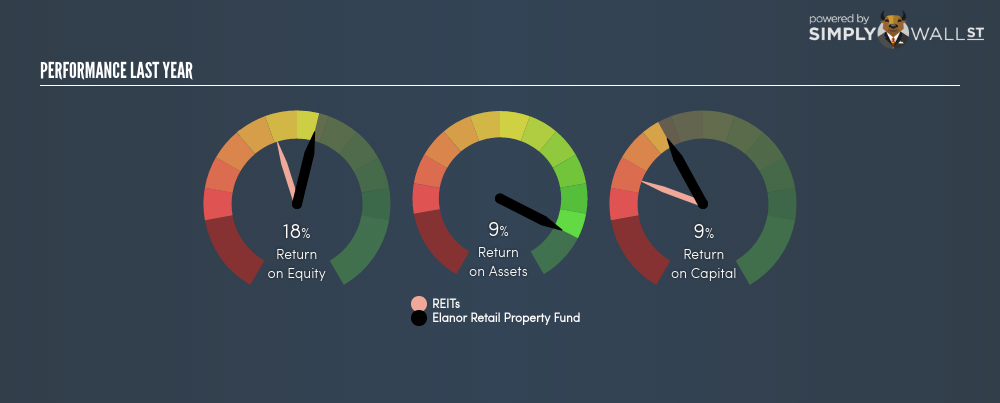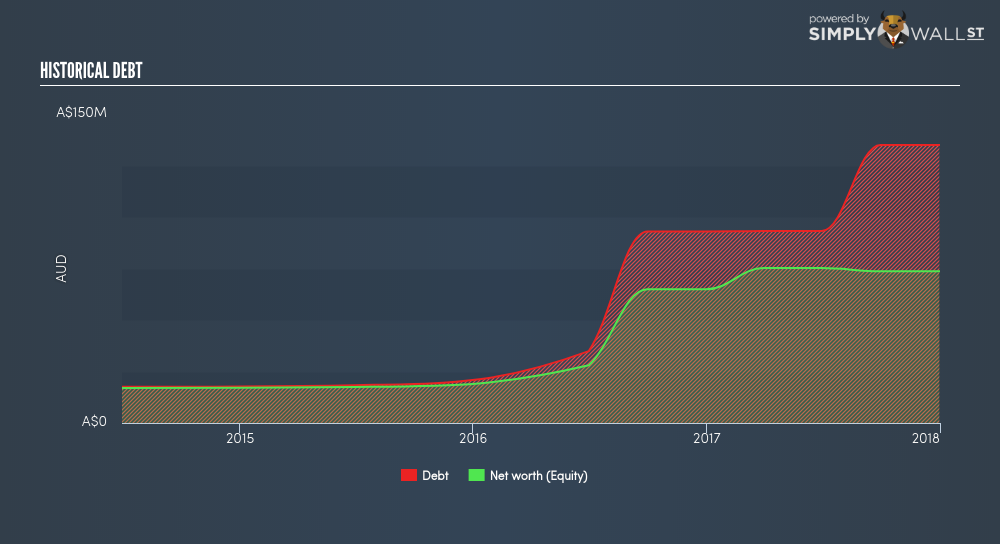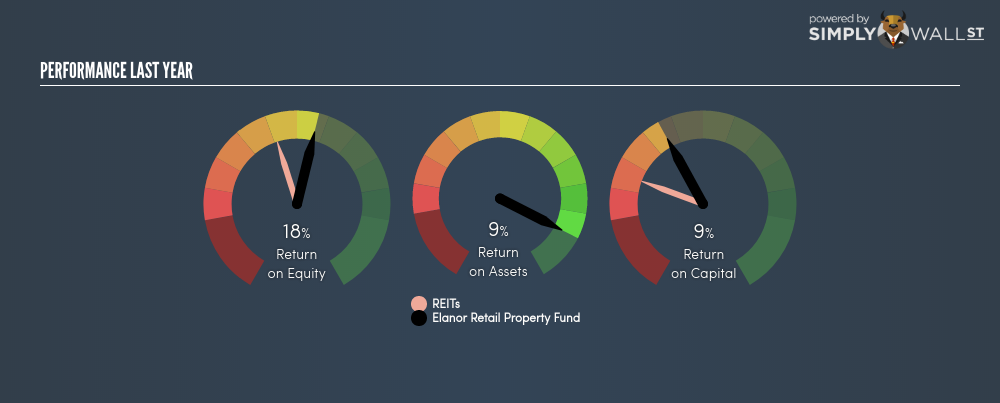The content of this article will benefit those of you who are starting to educate yourself about investing in the stock market and want a simplistic look at the return on Elanor Retail Property Fund (ASX:ERF) stock.
Elanor Retail Property Fund (ASX:ERF) outperformed the retail reits industry on the basis of its ROE – producing a higher 18.20% relative to the peer average of 13.18% over the past 12 months. Though, the impressiveness of ERF’s ROE is contingent on whether this industry-beating level can be sustained. This can be measured by looking at the company’s financial leverage. With more debt, ERF can invest even more and earn more money, thus pushing up its returns. However, ROE only measures returns against equity, not debt. This can be distorted, so let’s take a look at it further. See our latest analysis for Elanor Retail Property Fund
Peeling the layers of ROE – trisecting a company’s profitability
Return on Equity (ROE) is a measure of Elanor Retail Property Fund’s profit relative to its shareholders’ equity. It essentially shows how much the company can generate in earnings given the amount of equity it has raised. If investors diversify their portfolio by industry, they may want to maximise their return in the Retail REITs sector by investing in the highest returning stock. However, this can be misleading as each firm has different costs of equity and debt levels i.e. the more debt Elanor Retail Property Fund has, the higher ROE is pumped up in the short term, at the expense of long term interest payment burden.
Return on Equity = Net Profit ÷ Shareholders Equity
ROE is assessed against cost of equity, which is measured using the Capital Asset Pricing Model (CAPM) – but let’s not dive into the details of that today. For now, let’s just look at the cost of equity number for Elanor Retail Property Fund, which is 8.55%. Given a positive discrepancy of 9.65% between return and cost, this indicates that Elanor Retail Property Fund pays less for its capital than what it generates in return, which is a sign of capital efficiency. ROE can be broken down into three different ratios: net profit margin, asset turnover, and financial leverage. This is called the Dupont Formula:
Dupont Formula
ROE = profit margin × asset turnover × financial leverage
ROE = (annual net profit ÷ sales) × (sales ÷ assets) × (assets ÷ shareholders’ equity)
ROE = annual net profit ÷ shareholders’ equity
 ASX:ERF Last Perf June 21st 18
ASX:ERF Last Perf June 21st 18
The first component is profit margin, which measures how much of sales is retained after the company pays for all its expenses. Asset turnover shows how much revenue Elanor Retail Property Fund can generate with its current asset base. Finally, financial leverage will be our main focus today. It shows how much of assets are funded by equity and can show how sustainable the company’s capital structure is. ROE can be inflated by disproportionately high levels of debt. This is also unsustainable due to the high interest cost that the company will also incur. Thus, we should look at Elanor Retail Property Fund’s debt-to-equity ratio to examine sustainability of its returns. The ratio currently stands at a high 183.19%, meaning Elanor Retail Property Fund may have taken on a disproportionate level of debt which is driving the high return. The company’s ability to produce profit growth may hinge on its big debt burden.
 ASX:ERF Historical Debt June 21st 18
ASX:ERF Historical Debt June 21st 18
Next Steps:
ROE is a simple yet informative ratio, illustrating the various components that each measure the quality of the overall stock. Elanor Retail Property Fund exhibits a strong ROE against its peers, as well as sufficient returns to cover its cost of equity. With debt capital in excess of equity, ROE may be inflated by the use of debt funding, raising questions over the sustainability of the company’s returns. Although ROE can be a useful metric, it is only a small part of diligent research.
For Elanor Retail Property Fund, there are three pertinent aspects you should further examine:
- Financial Health: Does it have a healthy balance sheet? Take a look at our free balance sheet analysis with six simple checks on key factors like leverage and risk.
- Valuation: What is Elanor Retail Property Fund worth today? Is the stock undervalued, even when its growth outlook is factored into its intrinsic value? The intrinsic value infographic in our free research report helps visualize whether Elanor Retail Property Fund is currently mispriced by the market.
- Other High-Growth Alternatives : Are there other high-growth stocks you could be holding instead of Elanor Retail Property Fund? Explore our interactive list of stocks with large growth potential to get an idea of what else is out there you may be missing!

Investors! Do you know the famous “Icahn’s lift”?
Noted activist shareholder, Carl Ichan has become famous (and rich) by taking positions in badly run public corporations and forcing them to make radical changes to uncover shareholders value. “Icahn lift” is a bump in a company’s stock price that often occurs after he has taken a position in it. What were his last buys? Click here to view a FREE detailed infographic analysis of Carl Icahn’s investment portfolio.

